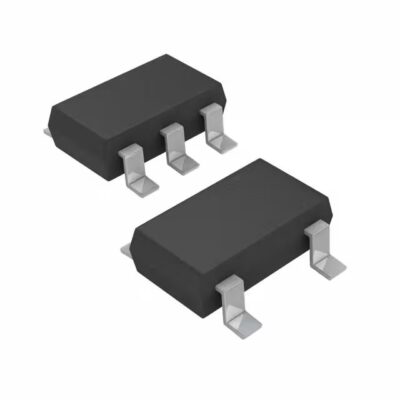MIC2287CYD5-TR
Part Number: MIC2287CYD5-TR
Manufacturer: Microchip Technology
Description: IC LED DRVR RGLTR PWM TSOT23-5
Shipped from: Shenzhen/HK Warehouse
Stock Available: Check with us
ICRFQ.com - Electronic Components Distributor in China Since 2003

Part Number: MIC2287CYD5-TR
Manufacturer: Microchip Technology
Description: IC LED DRVR RGLTR PWM TSOT23-5
Shipped from: Shenzhen/HK Warehouse
Stock Available: Check with us
| Datasheet | |
|---|---|
| Category | Integrated Circuits (ICs) |
| Family | PMIC – LED Drivers |
| Manufacturer | Microchip Technology |
| Series | – |
| Packaging | Tape & Reel (TR) |
| Part Status | Active |
| Type | DC DC Regulator |
| Topology | Step-Up (Boost) |
| Internal Switch(s) | Yes |
| Number of Outputs | 1 |
| Voltage – Supply (Min) | 2.5V |
| Voltage – Supply (Max) | 10V |
| Voltage – Output | – |
| Current – Output / Channel | 750mA (Switch) |
| Frequency | 1.2MHz |
| Dimming | Analog, PWM |
| Applications | Backlight |
| Operating Temperature | -40°C ~ 105°C (TJ) |
| Mounting Type | Surface Mount |
| Package / Case | SOT-23-5 Thin, TSOT-23-5 |
| Supplier Device Package | TSOT-23-5 |
The MIC2287CYD5-TR is a high-performance boost-switching regulator that is a sophisticated integrated circuit (IC). This IC was made for constant-current white LED driver use, and it has a number of useful and innovative features. In this guide, we’ll go over the MIC2287CYD5-TR in depth, looking at its main features, how it works, and what it could be used for. Whether you are a fan of electronics or a skilled designer, this guide is meant to give you all the information you need to use the MIC2287CYD5-TR in your projects.
The MIC2287CYD5-TR is a very powerful integrated circuit (IC) that is a boost-switching regulator made for constant-current white LED driver uses. Let’s take a better look at its most important features, how it works, and what it has to offer.
Efficiency is an important part of the MIC2287CYD5-TR’s design. It uses a feedback value of only 95 mV, which means that the current-set resistor loses as little power as possible. This choice of design allows for the lowest total output voltage and draws less current from the battery, making the system as a whole as efficient as possible.
In short, the MIC2287CYD5-TR is a great IC that was made to drive white LEDs in apps that use constant current. Its boost-switching regulator architecture, high-frequency PWM control scheme, and efficient design make it possible for it to have better performance, save room, make less noise, and use less energy. The MIC2287CYD5-TR is a good choice for getting the best LED driving power, whether you’re making backlighting solutions, sign displays, or general lighting systems.
PWM Control Scheme with a Constant Frequency: The MIC2287CYD5-TR uses a PWM control scheme with a constant frequency of 1.2 MHz. This control method makes sure that the switching frequency stays the same, even if the voltage at the input or output changes. It has a number of benefits:
The constant-frequency PWM control keeps the switching frequency the same, which makes the IC work well and in a reliable way.
Constant-current pumping is a way to keep a steady flow of electricity through a load, like a string of white LED lights. The MIC2287CYD5-TR is great at driving white LEDs with a steady current. It has the following benefits:
The MIC2287CYD5-TR is made with several features that make it more efficient:
In the end, the constant-frequency PWM control scheme of the MIC2287CYD5-TR provides stable operation and less EMI. A constant-current drive makes sure that all LEDs are the same brightness and are safe, and the efficient design with low feedback voltage and less power loss makes the whole thing use less energy. The MIC2287CYD5-TR is a great choice for high-performance white LED drivers because of how it works.
The MIC2287CYD5-TR is an IC that was made to run white LEDs in constant-current applications. It is very efficient and can be used in many different ways. It is a great choice for many different lighting projects because it has advanced features like high-frequency PWM control, low power loss, and overvoltage safety. This thorough guide gives you all the information you need to make the most of the MIC2287CYD5-TR in your LED driver designs.
Order the MIC2287CYD5-TR from ICRFQ, a top Chinese distributor of electronic parts, for an easy shopping experience. Explore what the MIC2287CYD5-TR can do for your field of knowledge and let new ideas flow.
WhatsApp us